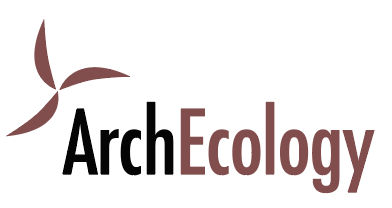Seattle Energy Code Amendments: What Developers Need to Know
From last November and into January of this year, the City of Seattle held a series of public meetings to discuss potential amendments to the 2021 Washington State Energy Code. ArchEcology founding partner Nancy Henderson attended, along with many other building energy professionals, to offer ideas for revisions and refinements throughout the series. The code is designed to make incremental progress toward the Seattle goal of carbon-neutral buildings and transportation by 2050. To get there, the code writers want to make it easier to upgrade buildings in the future to meet the goal. There are four major areas of emphasis to get this done: build a great envelope, eliminate combustion, use electricity wisely, generate power on-site. Here are the changes to the commercial energy code most likely to affect designers and developers.
Building Envelope
Important proposals to building envelope requirements include a minimum of 20% of the building’s glazing to be high performance – such as triple glazing, or equivalent. The goal of this requirement is to encourage further development of glazing technologies by creating a demand for them. This requirement cannot be traded off. It will also be a mandatory requirement for project pursuing the total building performance compliance path (C407). Maximum fenestration area will be determined by occupancy and use type. Maximum area ranges from 6% for warehouse to 40% for large office and multi-family (over eight stories).
Lighting and Renewables
Lighting Power reduced by approximately 5%
Clarify dimming control requirements for space types
Reduce lighting allowance for retail display
Electric-ready commercial kitchens.
Increase renewable energy requirement from 0.25 W/SF to 0.75 W/SF
Mechanical
Occupied standby controls for ventilation during occupied hours, when space isn’t occupied
Reduce fan power allowances
Increase effectiveness of HRV for R2 dwelling units
New pump requirements – Hydraulic Institute “Energy Rating” greater than zeroEnergy Credits, Modeling, Commissioning, and Metering
Energy Efficiency Credits (C406)
The state code has changed the C406 energy efficiency table extensively. Seattle is proposing to increase the number of efficiency credits required by approximately 10% above state code.
Total Building Performance Path/Energy Modeling (C407)
Site emission target 10% below state code
Allow credit to be taken for approved “unregulated loads” (i.e. Energy Star appliances)
No longer require electrical permit to be issued to take credit for lighting
Reduce Building Performance Factor (BPF) by 10% from state code
Building Commissioning (C408)
Require commissioning report to be submitted prior to final inspection and ensure that work is completed.
Metering (C409)
Require parking garage fans and lighting to be submetered, with an exemption to submetering for outlets in corridors and enclosed stairways.
Existing Buildings
In general, the code requires that any fossil fuel-based central space heating, water heating, and air-cooled chiller equipment be replaced with a heat pump system, which pump out more cool/warm air by volume than the energy it takes to run them.
Exceptions are made for affordable housing, hospitals, jail, small buildings and if change triggers an electrical service upgrade.If any of the exceptions are used, then a future decarbonization plan must be prepared. This is a schematic plan that is required to be prepared by a PE, but does not obligate future work.
The next step is for code amendments to be formalized and presented to city council, then be adopted and put into effect. This effort to clarify and simplify is essential to ensuring we make measurable and sustainable progress and meet Seattle’s 2050 carbon-neutral goals. The City of Seattle has announced that the implementation date of the Seattle Code Energy Code is delayed to no sooner than Monday, October 2, 2023 to accommodate a City of Seattle legislative review process.
ArchEcology analyzes the full spectrum of sustainable possibilities to identify the measures that make the most sense for your project to let you focus on what you do best – developing, designing, and building your project. Let us help.

